How going to London from Chesham has changed over the past 250 years
Nowadays, if someone in Chesham wants to travel to London, it’s simply a matter of using either an Oyster or debit card at Chesham railway station and getting on a Metropolitan line train to Baker Street or beyond. Scheduled journey time between Chesham and Baker Street just 54 minutes. But what about our ancestors?
The Stagecoach
Back in the late 1700s, if you wished to visit London you would need to get up very early in the morning to do so! Mr William Wyatt’s stagecoach left the George Inn (now the George & Dragon) at a quarter to seven and travellers would no doubt have arrived in plenty of time to enjoy a tankard of mulled ale before they left. Mr Wyatt rented the stables at the George from the landlord and usually drove the coach himself. He would have been armed with some kind of weapon as these were perilous times and hold-ups were not unknown.
The coach travelled through the hamlet of Waterside and along Latimer Bottom then up the hill to Chenies. It went to Rickmansworth via Chorleywood where the horses were changed for the first time, and the new team would be straining to pull the coach up Batchworth Hill. After going through Moor Park and Northwood, Mr Wyatt would pull into the Chandos Arms in Edgware where the landlady Mrs Elizabeth Perfect would have refreshments waiting for the travellers whilst the team of horses were changed again.
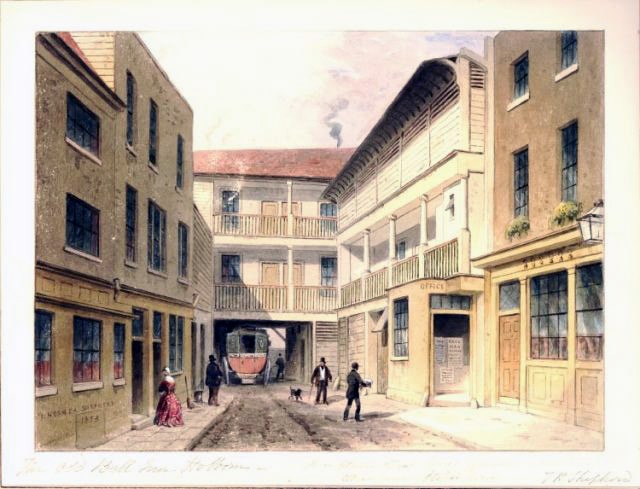
The fresh team took the coach through a number of small villages such as Maida Vale and then into London where the coach ended its journey at the Bell & Crown Inn, 138 Holborn, hopefully at around 10.30 to 11 o’clock. If our traveller intended to return to Chesham the same day, he would need to be ready to board the return coach at 3 o’clock in the afternoon. However mine host at the Bell & Crown, Samuel Waldegrave, did offer an “ordinary” which was served at 2 o’clock every day and which was a set meal at a fixed price, so our traveller could fortify himself with a decent meal before boarding the coach again.
The coming of the railway
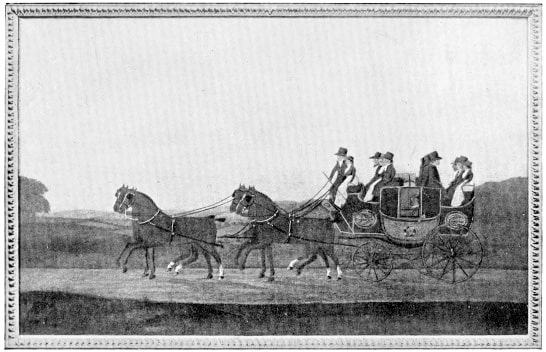
The London & Birmingham Railway finished constructing its railway line between London and Birmingham in 1837 and locally, had stations at Berkhamsted, Boxmoor and Watford. Our traveller to London soon realised that this was a faster, better way to travel and popular demand saw the demise of the Chesham stage coach in 1846, to be replaced by a “railway coach” which instead went from the George to Watford to connect with trains to London. It was run by Joseph Baines and left Chesham at 7 am, returning at 8 pm.
By 1876 our London commuter had the choice of two different routes to catch a train. He could continue going to Watford, or alternatively he could travel on the same railway line by catching the “railway omnibus” which left the Broadway every day (except Sunday) at 7 am and 3 pm to take passengers to Berkhamsted railway station. This was a very popular route used by a large number of people and quite often two vehicles would be needed to cater for all the passengers.
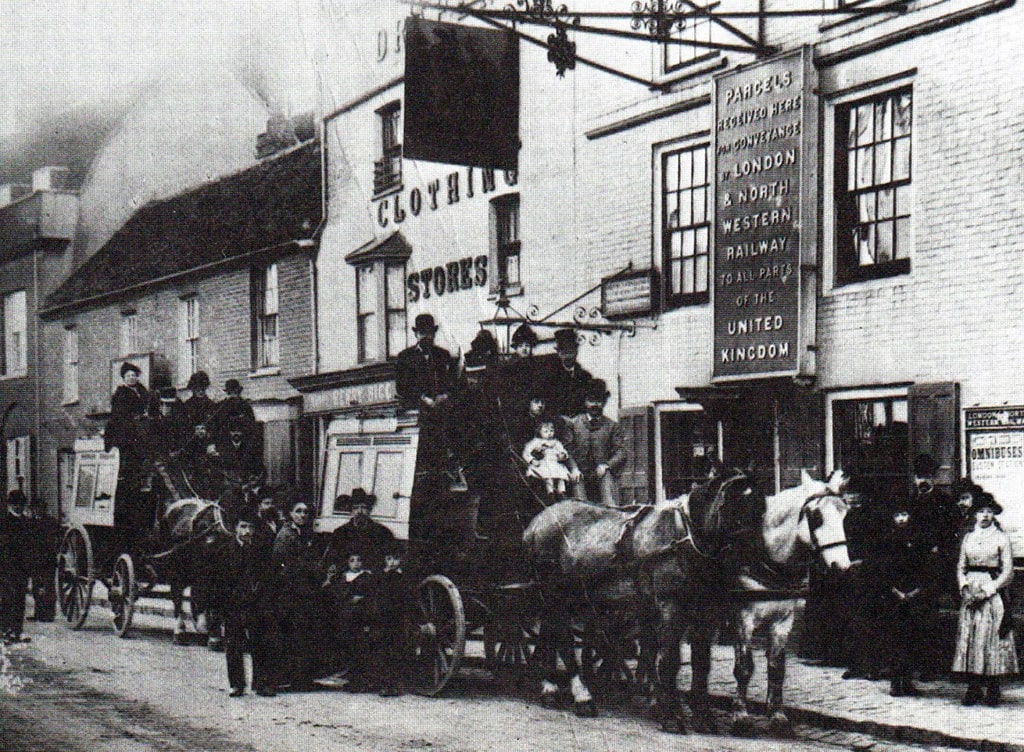
By 1887, the Metropolitan Railway had opened as far as Rickmansworth, and Mr Baines from the George immediately capitalised on this by ensuring that his Watford horse omnibus went via Rickmansworth railway station as well. This gave railway passengers yet another option and meant that the journey to the capital was becoming even shorter. But better things were to come.

The railway comes to Chesham
Chesham had been lobbying for its own railway line for something like forty years and at long, long last in 1889, the Metropolitan Company extended their line to Chesham via Chorleywood and Chalfont Road (now known as Chalfont & Latimer). This meant that our commuter could now simply go to Chesham railway station as we do today. But the Metropolitan Company did not intend to stop there. They bought up land along Chesham Vale with the intention of driving their line through to Tring and onwards to Aylesbury, but this was not to be. Recalcitrant land owners blocked the scheme, the Met decided to go via Amersham to reach Aylesbury instead and Chesham became a branch line.
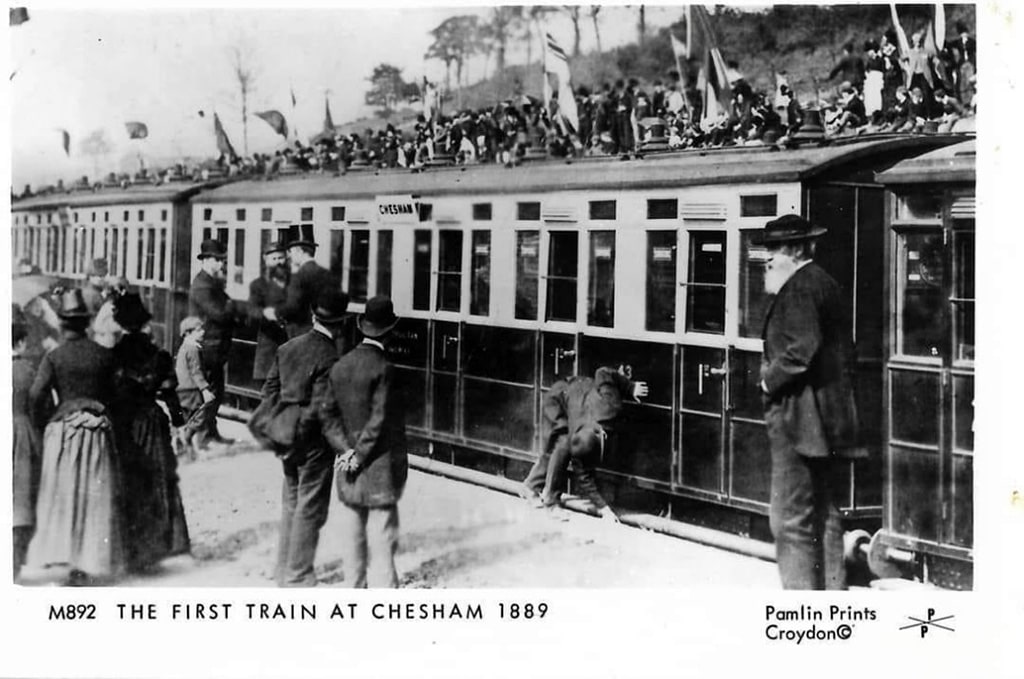
Up until 1933, the Metropolitan Line was run by a private company, but in that year it became part of the London Passenger Transport Board – later to be known as London Transport. The new owners did not quite know what to do with these far flung stations from Rickmansworth onwards. They were not part of London and after a considerable amount of debate, all stations from Rickmansworth north were transferred to the control of the LNER. These stations therefore were outside of the electrification scheme which London Transport implemented for the rest of the line in 1935.
The situation therefore as far as Chesham was concerned was that you boarded a steam train at Chesham which took you to Chalfont & Latimer station (the Chesham Shuttle). Here you boarded a second steam train which took you to Rickmansworth. Once at Rickmansworth, the steam engine was uncoupled and shunted out of the way and an electric locomotive replaced it for the remainder of the journey into London. On the return journey, the procedure would be reversed. It could cause substantial delays if railway traffic was heavy and it was a great relief to commuters travelling to Chorleywood, Chalfont & Latimer and either Amersham or Chesham when the entire line was electrified in 1960.
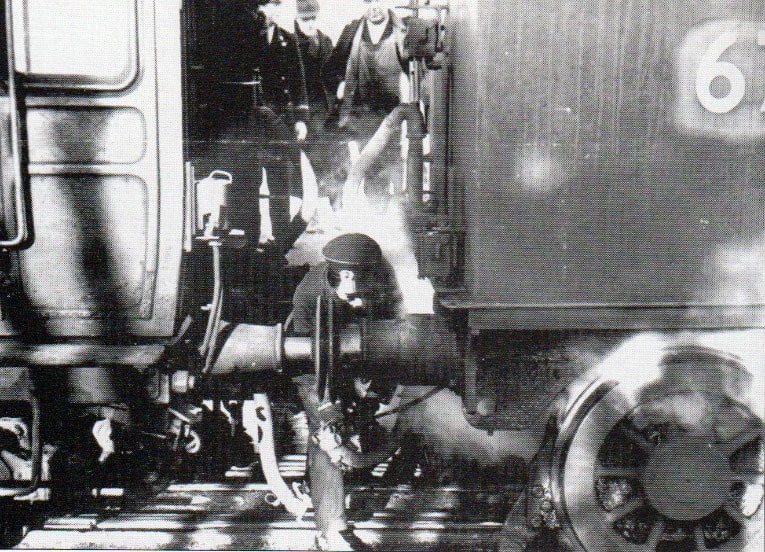
And so we return to the present. The Chesham Shuttle is a thing of the past with frequent through trains to and from the capital and we now grumble if the journey (which took nearly five hours 250 years ago) takes us longer than an hour!
This article is a modified form of an article published in the Bucks Free Press, Amersham and Chesham edition on 9 February 2024.
From the river to the railway
You can learn more about the importance of the River Chess and the railway to Chesham in our online exhibition.


